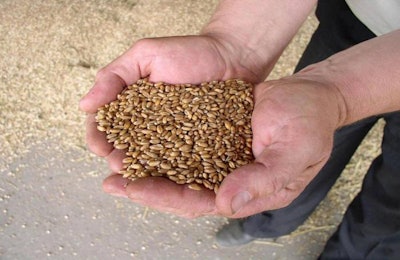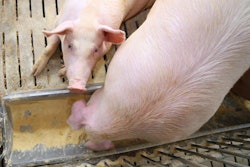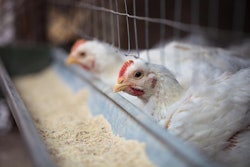
Minerals such as phosphorus are more easily available to broilers in a new variety of wheat developed in Denmark, research at Nottingham Trent University (NTU) in the U.K. has shown. Compared with other wheats, this grain can provide more of the nutrients essential for healthy bone growth and development, and reduce the need for feed supplements.
In feeding trials with broiler chickens at NTU’s Poultry Research Unit, the researchers found that the calcium and phosphorus were 14.6 and 22.8 percent more digestible in diets containing the new wheat – known as HIGHPHY – than those containing regular wheat and a phytase supplement.
The paper describing their experiments, by first-named author, D. Scholey and others, is entitled “P and Ca digestibility is increased in broiler diets supplemented with the high-phytase HIGHPHY wheat” and is published online in the journal, Animal: An International Journal of Bioscience.
In Europe, poultry diets are usually based on wheat, which contains a compound known as phytate that tightly binds minerals such as phosphorus. Without the natural digestive enzyme, phytase, to release the minerals from the phytate, poultry are unable to obtain the phosphorus from the wheat. Animal feed producers add either calcium phosphate or a phytase enzyme supplement to the feed to cover the birds’ requirements for healthy growth and development.
”It has been exciting to explore a completely different way of providing meat chickens with the phosphorus needed for healthy bones,” said Dr. Emily Burton, Head of the NTU Poultry Research Unit. “We will be looking to explore further the possibilities of wheat-derived phytase, as emerging research in this field shows the anti-nutritional effects of phytate in poultry extends far beyond locking away phosphorus.”
Also involved in and funding this study is UK-based Plant Bioscience Ltd. (PBL), an independent technology management company specializing in plant, food and microbial science. The firm is working with partners in the plant breeding and feed sectors to bring the new wheat to the market.
Development of the new wheat variety
From a single plant, the new wheat variety was developed and patented by scientists at the Department of Molecular Biology and Genetics at Aarhus University.
“We found the specific genes that are important to phytase activity in cereals,” said Associate Professor Henrik Brinch-Pedersen. “Then we found a mutant, in which the phytase genes are expressed more powerfully than in ordinary cereals, resulting in increased phytase activity.”
The new wheat type was optimized and patented in cooperation with PBL, and it was propagated in southern Spain because the growing season there is much longer than in Denmark.
The next key question was to establish whether the increased phytase activity in the new wheat could be retained in the harsh conditions of the chicken’s digestive system. Broiler experiments at NTU demonstrated that supplementing the feed with HIGHPHY wheat was an efficient way to release the phosphorus in the feed and make it easily available to the animals.
According to Brinch-Pedersen, whereas organic farmers are not allowed to include phytase feed supplements, they can make use of HIGHPHY wheat as it has been produced using traditional plant breeding methods.
The next steps are to test the new wheat for pigs and humans.
Iron and zinc deficiencies are common in the human population in many developing countries. Brinch-Pedersen said that if wheat containing its own phytate-metabolizing enzyme became available, it could significantly improve the future health of these people.
















